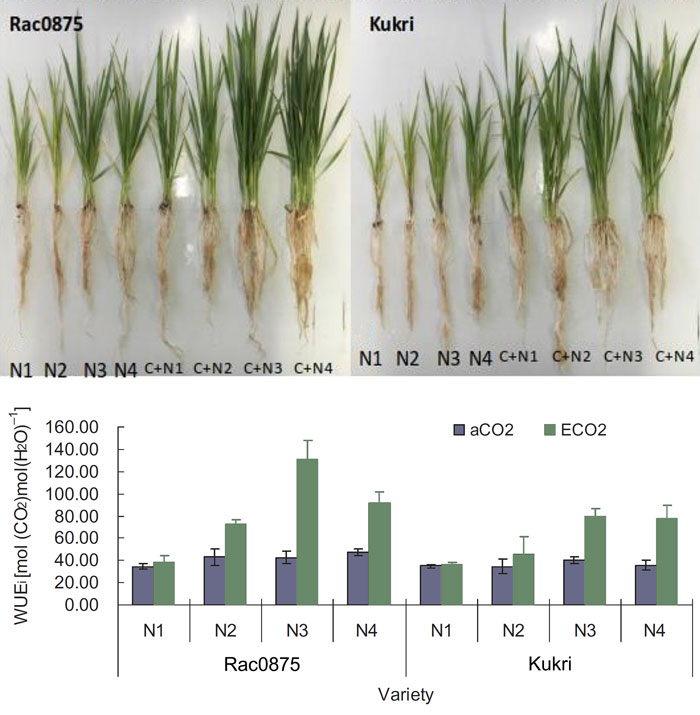| Tweet | Follow @co2science |
Paper Reviewed
Li, P., Hao, X., Aryal, M., Thompson, M. and Seneweera, S. 2019. Elevated carbon dioxide and nitrogen supply affect photosynthesis and nitrogen partitioning of two wheat varieties. Journal of Plant Nutrition 42: 1290-1300.
A recent paper by Li et al. (2019) caught our eye recently for a nice graphic that shows the growth-enhancing influence of elevated CO2.
The study was conducted in controlled-environment chambers, where two cultivars of wheat (RAC0875 and Kukri) were grown for six weeks under two atmospheric CO2 concentrations (400 or 700 ppm) and one of four nitrogen (N) treatment levels (0.2, 0.5, 1.0 or 3.0 mM N).
Results of the experiment revealed, in the words of the authors, that "elevated CO2 and high N facilitate the improvement of photosynthesis and, thus, the biomass." "Furthermore," they add, it demonstrated that "intrinsic water use efficiency of both the cultivars were significantly increased at high N level under elevated CO2."
Both of these findings are illustrated in the figure below. The top panel shows plant above and below ground biomass for representative plants growing in each nitrogen and CO2 treatment for both cultivars, while the bottom panel presents the CO2-induced stimulation of intrinsic water use efficiency. As can be gleaned from these graphics, regardless of nitrogen treatment, as the air's CO2 concentration rises in the future, the wheat biomass of these two cultivars will be improved along with their plant water use efficiency.

Figure 1. Top left and right panel: Effect of elevated CO2 (C+) on the growth of two wheat varieties (Rac0875, top left; Kukri, top right) at different levels of nitrogen (N) supply (N1, N2, N3 and N4 correspond to respective N treatment levels of 0.2, 0.5, 1.0 or 3.0 mM). Bottom panel: Effect of elevated CO2 (ECO2) on intrinsic water use efficiency (WUEi) of wheat at different N supply treatments. Source: Adapted from Li et al. (2019).




